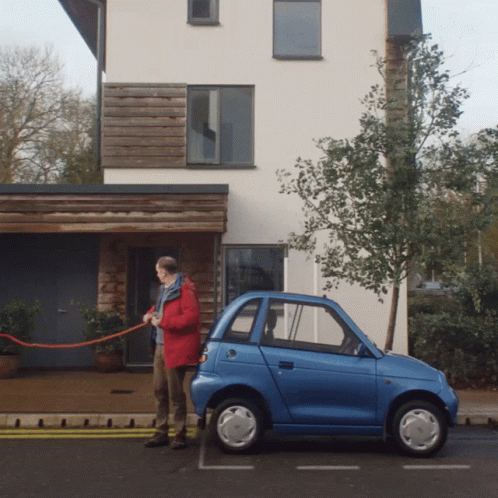Car Safety Innovations: How Technology Saves Lives

In recent years, car safety technology has witnessed a significant evolution, with automotive innovations that have had a positive impact on reducing accidents and ultimately saving lives. From the adoption of seat belts to the integration of autonomous emergency braking and lane-keeping assist, vehicle safety features have made tremendous progress. As technology continues to revolutionize vehicle safety, the possibilities for innovation in this sector can only get better.
The safety technology road map is expanding each day, with the introduction of airbags and sensor technology being just the beginning. The application of tech in car safety is a game-changer, as it provides real-time data and useful insights for car manufacturers and drivers to make informed decisions about how to enhance vehicle safety. As more and more cars are equipped with these features, the likelihood of accidents decreases; it's a clear indication that car safety technology is a crucial aspect of modern-day driving.
Section 1: Autonomous Emergency Braking Systems

Car safety technology has come a long way in recent years, and one of the most promising automotive innovations out there right now is the Autonomous Emergency Braking (AEB) system. Essentially, AEB is a vehicle safety feature that leverages technology to help drivers avoid accidents in emergency situations. Unlike traditional brakes, which require human intervention to stop a vehicle, AEB works by automatically applying the brakes when a potential collision is detected. This can be achieved through a variety of techniques, such as radar, lidar, and cameras, all of which work together to analyze the road ahead and identify potential hazards. So, just how effective is this tech in car safety? Well, the data is quite compelling.
Studies have shown that vehicles equipped with AEB have significantly lower rates of rear-end collisions, and when accidents do occur, the severity of injuries is significantly reduced. It's no wonder, then, that more and more car manufacturers are incorporating AEB into their vehicles. With this innovative technology, we can all breathe a bit easier knowing that our cars have an extra layer of protection in case of emergency.
Section 2: Advanced Driver Assistance Systems (ADAS)
As car safety technology continues to evolve, innovations in automotive safety are transforming the industry. One major aspect of this progress is the development of Advanced Driver Assistance Systems (ADAS). These systems are designed to enhance driver awareness and reaction times by utilizing a variety of safety features.
Lane-keeping assist technology enables cars to detect when they are veering out of their lane and adjust their course accordingly, while adaptive cruise control systems can automatically adjust your speed to match the car ahead of you. Blind-spot detection technology is another common feature of ADAS, alerting drivers to objects in their blind spot that might otherwise go unnoticed.
These features work in concert to help drivers avoid accidents and keep themselves and their passengers safe on the road. With the ever-increasing sophistication of tech in car safety, we can be sure that new features will continue to emerge and enhance vehicle safety for years to come.
Section 3: Vehicle-to-Vehicle (V2V) Communication

Vehicle-to-Vehicle (V2V) communication has revolutionized car safety technology and automotive innovations. This cutting-edge technology allows cars to communicate with each other, warning drivers of potential accidents before they even happen. V2V technology enables vehicles to share information such as speed, direction, and location, allowing them to prevent collisions through advanced maneuvering techniques.
One of the most significant benefits of V2V communication is its ability to prevent accidents that may have occurred due to human error. For example, if a driver fails to see a car approaching on the driver's side, the V2V system will alert both drivers, giving them enough time to react and avoid a collision.
The system will also alert both drivers if an emergency vehicle is approaching from any direction, allowing for quick clearance of the roadway. V2V technology is one of the most revolutionary vehicle safety features in recent years and is proof that tech in car safety has come a long way. This technology promises to reduce the number of fatalities and injuries caused by accidents and improve road safety for all motorists. As this technology continues to evolve, it is exciting to see what other innovations will come to the automotive industry.
Section 4: Telematics and Real-Time Monitoring
Telematics, a field that merges telecommunications and informatics, has revolutionized the way we monitor vehicle performance and driver behavior. With the advances in technology, telematics has become a vital aspect of car safety technology, enabling real-time monitoring of a vehicle’s health and the driver's behavior.
By leveraging real-time data, automotive innovations have transformed how we respond to emergencies and improve road safety. Car safety technology has come a long way, and now vehicle safety features are equipped with telematics systems that provide a more comprehensive overview of a driver's habits and the vehicle's condition.
For instance, telematics can assist in detecting hazards, providing insurance companies with essential data, and analyzing driver behavior to improve safe driving. The use of telematics and real-time monitoring in vehicles has led to significant advancements in tech in car safety, making it easier to respond quickly to emergencies and improve overall safety on our roads.
Section 5: Impact of Electric Vehicles on Safety

Electric vehicles (EVs) have become increasingly popular in recent years, and with good reason. Not only are they environmentally friendly, but they also offer numerous safety features that have the potential to significantly reduce accidents on the road. Advanced car safety technology has made life-saving designs and features more accessible to drivers than ever before.
For instance, EVs often come equipped with features like automated emergency braking, forward collision warnings, and lane departure warnings. These innovations, among others, are making drivers more aware of their surroundings and giving them more control over their vehicles.
Additionally, EVs have a lower center of gravity than traditional cars, making them less likely to roll over in the event of an accident. The rising popularity of electric vehicles is therefore contributing to overall road safety by encouraging the implementation of tech in car safety and pushing the boundaries of automotive safety innovations. As more people make the switch to electric vehicles, the safety benefits will continue to grow, making our roads safer and more secure for everyone.
Section 6: The Future of Autonomous Vehicles
The future of autonomous vehicles has the potential to significantly impact road safety. The implementation of advanced car safety technology has been a hot topic for years, with many car manufacturers investing millions of dollars in innovative technology to increase vehicle safety features. The idea of self-driving cars has been discussed for decades, with many automotive innovations already in place to help with steering, braking, and collision avoidance.
As technology progresses, so too does the potential for autonomous vehicles to revolutionise the way we utilise transportation. While there are still current challenges to overcome, such as legislation and acceptance from consumers, the future potential of fully autonomous vehicles looks promising. Self-driving cars have the potential to eliminate the human error that is often the cause of accidents on the road. As tech in car safety continues to develop, we can expect to see a decrease in road accidents and fatalities as a result of autonomous vehicles.
As we continue to march towards an autonomous future, the safety of drivers and passengers will be at the forefront of innovation. Only time will tell how fully autonomous vehicles will influence the world of transportation, but one thing is clear: car safety is in the process of reaching new levels of technological advancement.
Section 7: Enhancing Safety through Material Innovations

As car safety technology continues to evolve, manufacturers are constantly exploring new automotive innovations to enhance the safety of their vehicles. One area of focus has been on the use of increasingly advanced materials in vehicle design, resulting in significant improvements to the strength and durability of vehicle frames and windshields. These materials not only make vehicles more lightweight and fuel-efficient, but they also contribute to the creation of safer vehicle designs. For instance, by using stronger steel alloys in vehicle frames, manufacturers are able to better protect passengers in the event of a collision.
Meanwhile, innovations in windshield technology, such as the use of laminated glass or even embedded sensors, are helping drivers better navigate hazardous road conditions, adding an extra layer of safety to the vehicles they operate. Taken together, these various tech in car safety advances demonstrate how vehicle safety features are constantly evolving and improving, with material innovations playing an important role in enhancing overall safety on the road.
Section 8: Role of AI in Predictive Safety
As technology continues to advance, the automotive industry is implementing unique ways to enhance vehicle safety. One of the most significant innovations in car safety technology is the integration of artificial intelligence (AI) into predictive safety measures. With AI, vehicle safety features can be designed to predict and prevent potential accidents before they occur. By analyzing vast amounts of data, AI can identify patterns of risk, predict possible accidents, and alert drivers to take corrective action.
Moreover, by integrating AI with other safety technologies such as collision sensors and adaptive cruise control systems, it is possible to create comprehensive protection for drivers and passengers. Through the use of tech in car safety, AI can improve driving experiences while reducing accidents, ensuring that drivers and passengers remain as safe as possible on the roadways. As such, AI plays an essential role in the future of automotive safety and should continue to be explored and refined to ensure the highest level of protection for drivers and passengers alike.
Section 9: LUNA's Commitment to Safety

LUNA understands the significance of efficient and practical technology. It uses its app, which provides hassle-free experiences in policy cancellation and renewal by giving access to round-the-clock connection with licensed professionals. Notably, LUNA Insurance ensures fair pricing and proper coverage for its clients, which is of utmost importance when it comes to safety. By offering Privary Protection, Automatic Shopping, 24/7 Agent Availability and Digital Insurance Cards, among other features, LUNA represents progress towards a safer, more innovative insurance industry.
Improvements in car safety technology have led to significant advancements in automotive innovations, increasing the safety of millions of drivers and passengers all over the world. Autonomous Emergency Braking Systems (AEBS), Advanced Driver Assistance Systems (ADAS), and Vehicle-to-Vehicle (V2V) communication are among the top vehicle safety features that have been developed to reduce the number of accidents on the road.
These technologies are paving the way for greater safety through telematics and real-time monitoring, which have allowed for the early detection of potential issues and quick responses to emergency situations. The impact of electric vehicles on safety is also noteworthy, as these cars feature advanced battery management systems that reduce the risk of fires. Looking to the future, the possibilities presented by autonomous vehicles are endless, with the potential to further enhance safety through material innovations that reduce the impact of accidents on drivers and passengers alike.
The integration of AI in predictive safety measures shows great promise in enhancing road safety. Companies like LUNA are playing a crucial role in advocating for and utilizing these technologies to their fullest potential, investing significantly in research and development to ensure that safety remains a top priority. As such, continuous innovation in automotive safety is critical, as it serves to reduce accidents, save lives, and enhance the driving experience. Overall, it is clear that tech in car safety is here to stay, and the future looks promising for the continued advancement of vehicle safety features.
